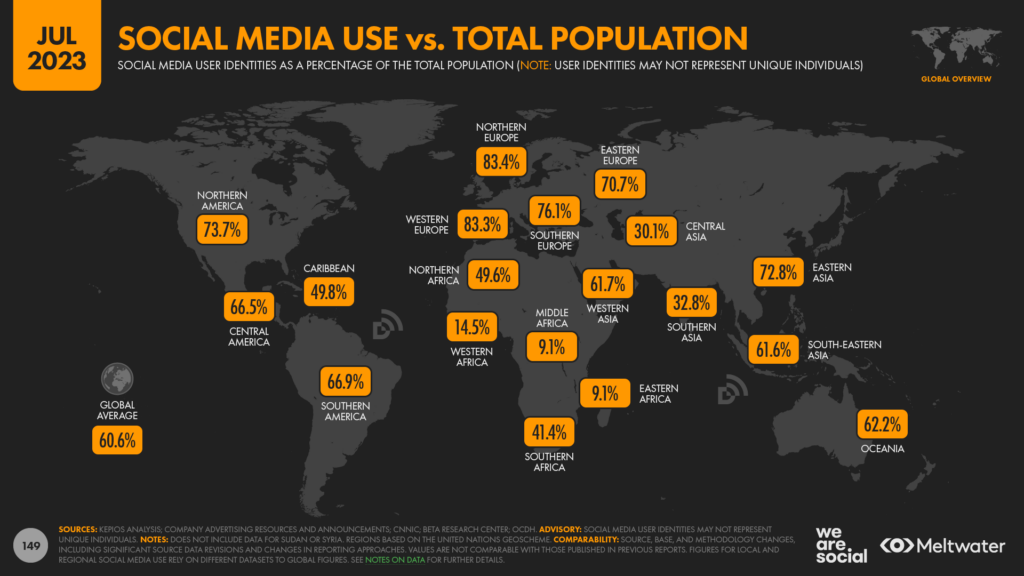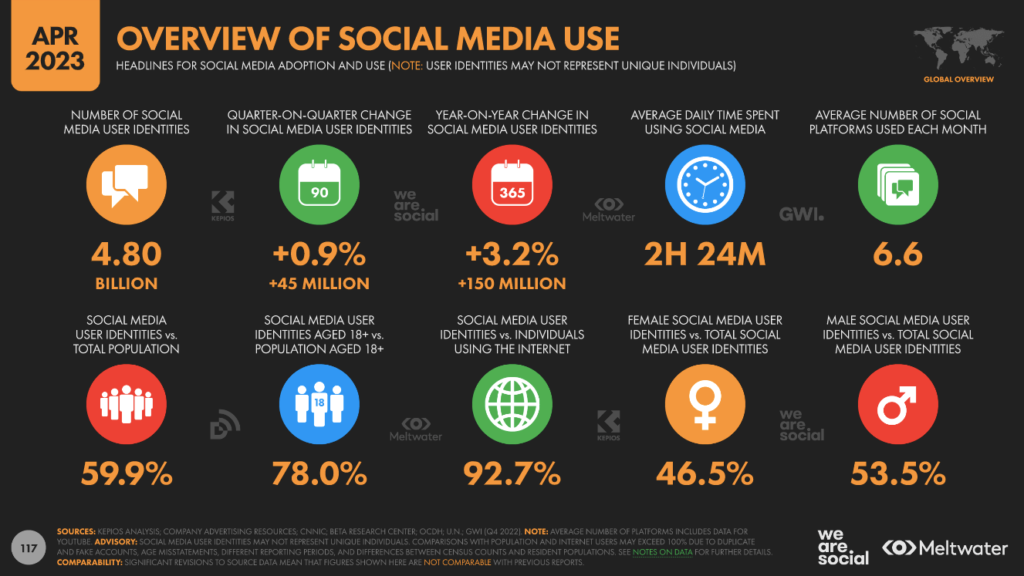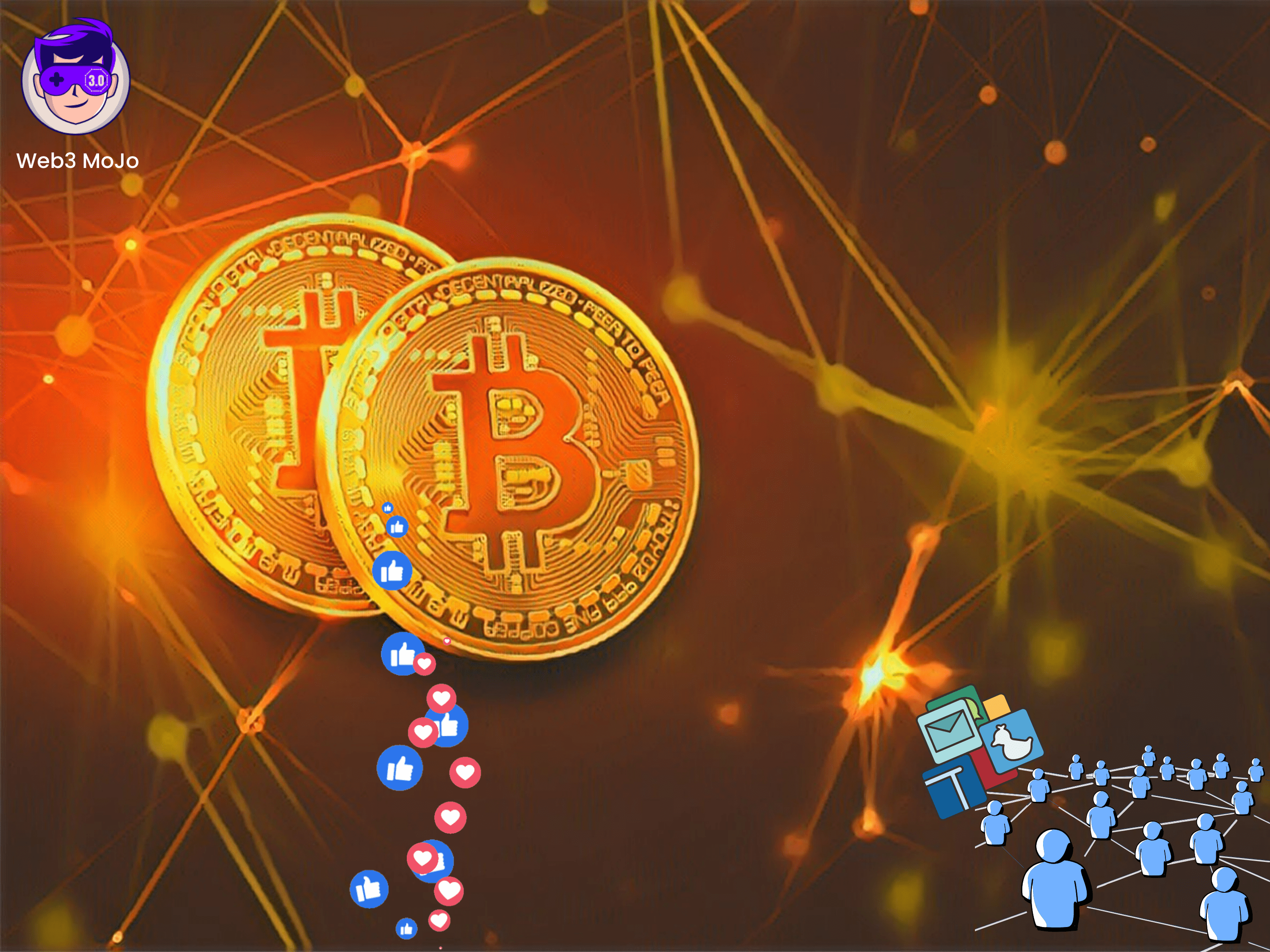Introduction
In an era dominated by digital innovation, social media has emerged as a pivotal tool for promoting and establishing the presence of blockchain projects. The intersection of Web3 and social media opens up new avenues for communication, community building, and marketing. In this context, Web3MoJo, a leading Web3 Marketing Agency, stands at the forefront of empowering blockchain projects to navigate and excel in the dynamic landscape of social media.
1. Understanding the Landscape
The blockchain industry is characterized by its unique challenges and opportunities in the social media realm. According to a report by Statista, the number of blockchain wallet users worldwide reached over 81 million in 2022, emphasizing the growing interest and user base in the blockchain space. This presents an immense opportunity for projects to tap into a global audience.
However, with great potential comes heightened competition. The decentralized and often complex nature of blockchain projects can make it challenging to convey their value proposition to a broader audience. This necessitates a strategic approach to social media marketing, emphasizing the creation of a robust community around the project.
2. Crafting Your Narrative
Crafting a compelling brand story is crucial for standing out in the crowded blockchain space. According to a survey conducted by Edelman, 81% of consumers said that they need to trust a brand before making a purchase. In the context of blockchain, where transparency and trust are paramount, a well-defined narrative becomes even more critical.
Successful blockchain projects often communicate their vision, mission, and value proposition coherently across all social media channels. This not only establishes a clear identity but also resonates with the target audience, fostering a sense of trust and credibility.

3. Choosing the Right Platforms
The choice of social media platforms plays a pivotal role in the success of a blockchain project’s marketing efforts. According to the Global Digital Overview 2022 report, there were 3.96 billion active social media users worldwide, representing a 9.2% increase from the previous year. Understanding the demographics and preferences of each platform is essential for effective targeting.
Blockchain projects can benefit from platforms like Twitter for real-time updates, LinkedIn for professional networking, and platforms like Discord for building a more engaged community. Platforms like TikTok and Instagram can be leveraged for visually appealing content that resonates with a younger audience.
4. Building a Strong Community
Building a strong and engaged community is a cornerstone of success for blockchain projects. A study by Hootsuite revealed that 64% of marketing executives see community engagement as crucial for building brand awareness and loyalty. In the blockchain space, where community support can drive project success, fostering engagement is even more critical.
Transparency and communication are key elements in community building. Blockchain projects should actively engage with their audience, addressing concerns, providing updates, and seeking feedback. The success of decentralized finance (DeFi) projects like Aave and Uniswap can be attributed, in part, to their active and passionate communities.
5. Leveraging Influencers and Thought Leaders
Influencers play a significant role in shaping opinions and driving engagement on social media. According to a survey by Influencer Marketing Hub, businesses are making $5.20 for every $1 spent on influencer marketing, underlining its effectiveness. In the blockchain space, influencers and thought leaders can bring credibility and trust to a project.
Identifying influencers who align with the project’s values and objectives is crucial. Collaborations with influencers can range from sponsored content to joint initiatives that benefit both parties. Thought leaders, often recognized experts in the blockchain industry, can also provide valuable endorsements and insights.
6. Engaging Content Strategies
Creating engaging content is paramount for capturing the attention of a diverse audience. Visual elements, such as infographics and videos, are highly effective in conveying complex blockchain concepts. According to a study by HubSpot, social media posts with images receive 650% higher engagement than text-only posts.
Blockchain projects should tailor their content to each platform’s unique features. For example, Twitter’s character limit encourages concise and impactful messaging, while Instagram and TikTok allow for more visually creative storytelling. Regularly updating content to reflect industry trends and project developments keeps the audience engaged and informed.
7. Utilizing Web3 Features
The integration of Web3 features into social media marketing adds a layer of innovation to blockchain projects. Non-fungible tokens (NFTs), decentralized identities, and other Web3 technologies present unique opportunities for engagement. According to DappRadar, the number of NFT wallets has been steadily growing, reaching 620,749 in 2022.
Blockchain projects can explore the creation and distribution of NFTs as part of their marketing strategy, offering exclusive digital assets to their community. Integrating decentralized identities can enhance security and privacy, addressing concerns that are often paramount in the blockchain community.
8. Metrics and Analytics
Data-driven decision-making is essential for refining and optimizing social media strategies. Metrics such as engagement rates, click-through rates, and conversion rates provide valuable insights into the effectiveness of campaigns. According to a survey by Gartner, 87% of marketing leaders use data to drive decision-making.
Blockchain projects should leverage analytics tools provided by social media platforms to track and analyze key performance indicators (KPIs). Regularly assessing metrics allows for the identification of successful strategies and areas for improvement, enabling projects to adapt and evolve in response to changing market dynamics.

Conclusion
In conclusion, the successful navigation of social media for blockchain projects requires a strategic and data-driven approach. Web3MoJo, with its expertise in Web3 marketing, serves as a valuable partner for projects seeking to unlock the full potential of social media in the blockchain space. By understanding the landscape, crafting compelling narratives, choosing the right platforms, building strong communities, leveraging influencers, creating engaging content, utilizing Web3 features, and analyzing metrics, blockchain projects can establish a formidable presence on social media, contributing to their overall success in the dynamic and evolving world of Web3.
FAQs
Blockchain technology can revolutionize social media in several ways:
1. Decentralization: Blockchain introduces decentralization, reducing reliance on centralized authorities. Social media platforms built on blockchain can be more resistant to censorship and offer increased user control over data.
2. Data Security: Blockchain ensures secure and transparent storage of user data. Users have greater control over their personal information, reducing the risk of data breaches and unauthorized access.
3. Tokenization: Blockchain enables the creation of tokens, fostering new economic models within social platforms. Users can be rewarded with tokens for engagement, content creation, or other valuable contributions.
4. Content Authenticity: Blockchain can be used to timestamp and verify the authenticity of content. This helps in combating issues like fake news and deepfakes by providing a transparent and immutable record of content creation and distribution.
Promoting a blockchain project involves a multi-faceted approach:
1. Clear Value Proposition: Clearly communicate the project’s value proposition and benefits. Emphasize how the project solves real-world problems or improves existing processes.
2. Engaging Content: Develop engaging and informative content across various platforms. Utilize blogs, videos, infographics, and other media to convey the project’s message to a broad audience.
3. Community Building: Actively engage with the community. Create and nurture a community around the project through social media channels, forums, and other platforms. Encourage discussions, address concerns, and foster a sense of belonging.
4. Partnerships and Collaborations: Collaborate with influencers, thought leaders, and other projects in the blockchain space. Partnerships can amplify your reach and lend credibility to your project.
5. Events and Conferences: Participate in relevant industry events and conferences. This not only provides exposure but also allows for networking opportunities with potential investors, partners, and users.
Promoting cryptocurrency on social media requires a strategic approach:
1. Educational Content: Cryptocurrency is still a relatively new concept for many. Create content that educates your audience about the fundamentals of blockchain, cryptocurrencies, and their potential benefits.
2. Highlight Use Cases: Showcase real-world use cases for your cryptocurrency. Explain how it solves problems or improves existing processes in a way that resonates with your target audience.
3. Engage with the Community: Actively participate in cryptocurrency communities on social media platforms. Respond to inquiries, address concerns, and provide updates to build trust and credibility.
4. Visual Content: Utilize visual content, such as infographics and videos, to simplify complex concepts. Visuals can make your content more shareable and digestible for a wider audience.
5. Compliance and Transparency: Emphasize compliance with regulations and highlight transparency in your operations. These factors are crucial for building trust in the often volatile cryptocurrency space.
1. Enhanced Security: Blockchain ensures secure and tamper-resistant storage of data, reducing the risk of hacks and unauthorized access.
2. Decentralization: Decentralized social media platforms eliminate the need for intermediaries, giving users more control over their data and reducing censorship risks.
3. Monetization Opportunities: Blockchain introduces tokenization, allowing users to be rewarded with tokens for their contributions, creating new monetization models.
4. Authenticity and Transparency: Timestamps and cryptographic verification on the blockchain ensure the authenticity of content, combating issues like misinformation and deepfakes.
5. Ownership of Digital Assets: Users have greater ownership and control over their digital assets, such as NFTs, creating new avenues for digital content creators.
1. Decentralization of Content Distribution: Blockchain enables the creation of decentralized content distribution platforms, reducing reliance on traditional media channels.
2. Tokenization of Media Assets: Media assets like music, videos, and articles can be tokenized, allowing for more direct and transparent compensation for content creators.
3. Transparency and Anti-piracy Measures: Blockchain’s transparency and immutability can be leveraged to combat piracy and ensure fair compensation for content creators.
4. Smart Contracts in Royalty Distribution: Smart contracts on the blockchain automate royalty distribution, ensuring that content creators receive their fair share without intermediaries.
1. Financial Inclusion: Blockchain facilitates financial services for the unbanked population, promoting financial inclusion on a global scale.
2. Trust and Transparency: Blockchain’s transparency and immutability build trust in transactions, impacting industries such as supply chain, healthcare, and finance.
3. Reduced Intermediaries: Blockchain eliminates the need for intermediaries in various processes, reducing costs and increasing efficiency.
4. Empowerment of Content Creators: Content creators, especially in the digital space, can have greater control over their work, thanks to blockchain’s ability to establish ownership and enforce copyright.
5. Community Governance: Blockchain enables decentralized autonomous organizations (DAOs) and community governance, giving users a more active role in decision-making processes.
Related Articles
